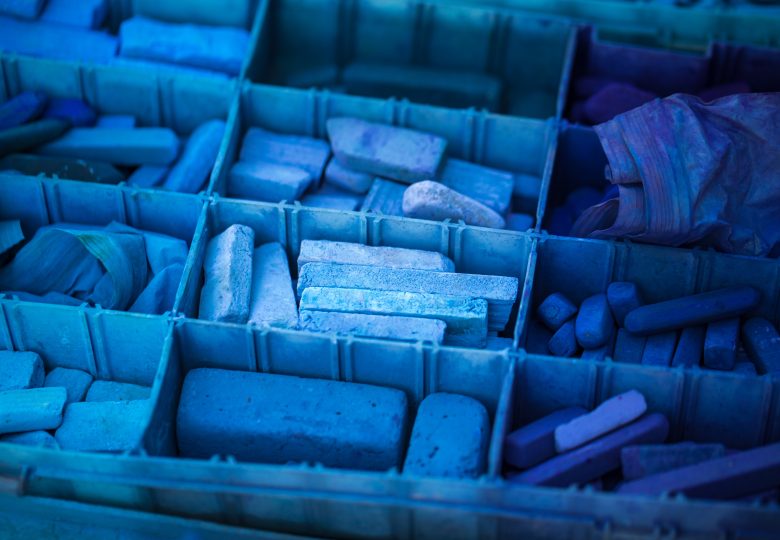Cobalt – Chemical of the Month

By Mariam Tauhaybeche, Pharmacist
What is Cobalt
Cobalt is a chemical with the symbol Co, and it is found as a natural component of the earth’s crust. Cobalt is wellknown in pigment colors blue and green and it can also be found widely in the environment in very low concentration. Humans can be exposed to small amount of cobalt by breathing air, drinking water and food may contain cobalt. Concentration of cobalt found in the ground is ranging from 1 to 40 ppm, where the air contains less than 2 ppb1.
Humans ingest cobalt through the drinking of water, eating plants and animal products (i.e. meat and dairy). Another way to be exposed to cobalt is through cosmetic, toys, furniture and other tools in kitchen etc.
What is the problem and what do the experts say
Cobalt is a strong skin sensitizer and a frequent cause of allergic contact dermatitis. It is estimated that up to 7,4 % of patch tested dermatitis patients in Europe and North America are allergic to cobalt2. It has been difficult to determine an exposure source, but some suggest jewelry, textile, color pigments, leather and tools.
Not much is needed before you can be sensitized with cobalt, studies has shown that 10 ppm can elicit cobalt dermatitis3.
The EU has identified 20 metals and minerals (2014) as being “Critical”, and among those is cobalt.
Cobalt sensitization affects both women and men and co-sensitization with nickel and chromate has often been reportet4. Studies report that cobalt sensitization is more frequent in women than in men. Cobalt sensitization is believed to be involved in the onset of allergic contact dermatitis in several occupations: Hairdressing, construction workers, hygiene and cleaning work. And among women it is more frequent to see hand and facial cobalt dermatitis 2.
The above-mentioned occupations are mostly handled by women and may be an explanation to why women are more frequent to develop cobalt dermatitis. The same trend is also seen in consumers, where it is more frequently women who develop cobalt dermatitis, often located on hands and in the face2, which could be explained by the use of make-up.
AllergyCertified opinion
The presence of cobalt naturally contained inside raw materials (e.g., pigments) used to produce cosmetics may represent a concern for the final quality and safety of the products. To ensure minimum amount of cobalt in AllergyCertified products, we require a test to ensure that the level of cobalt in the final product does not exceed 1 ppm. This limit is chosen as no reaction was obtained 5.
Literature
- Public Health Statement. Public Health Statement Cobalt. CAS# 7440-48-4. Agency Toxic Subst Dis Regist. 2004:10. https://www.atsdr.cdc.gov/ToxProfiles/tp33-c1-b.pdf.
- Alinaghi F, Zachariae C, Thyssen JP, Johansen JD. Causative exposures and temporal development of cobalt allergy in Denmark between 2002 and 2017. Contact Dermatitis. 2019;81(4):242-248. doi:10.1111/cod.13326
- Julander A, Hindsén M, Skare L, Lidén C. Cobalt-containing alloys and their ability to release cobalt and cause dermatitis. Contact Dermatitis. 2009;60(3):165-170. doi:10.1111/j.1600-0536.2008.01497.x
- Rui F, Bovenzi M, Prodi A, et al. Nickel, cobalt and chromate sensitization and occupation. Contact Dermatitis. 2010;62(4):225-231. doi:10.1111/j.1600-0536.2009.01650.x
- Allenby CF, D.A.Basketter. Minimum eliciting patch test concentration of cobalt. Contact Dermatitis. 1989;20:185-190. doi:10.1111/j.1600-0536.1991.tb01624.x
